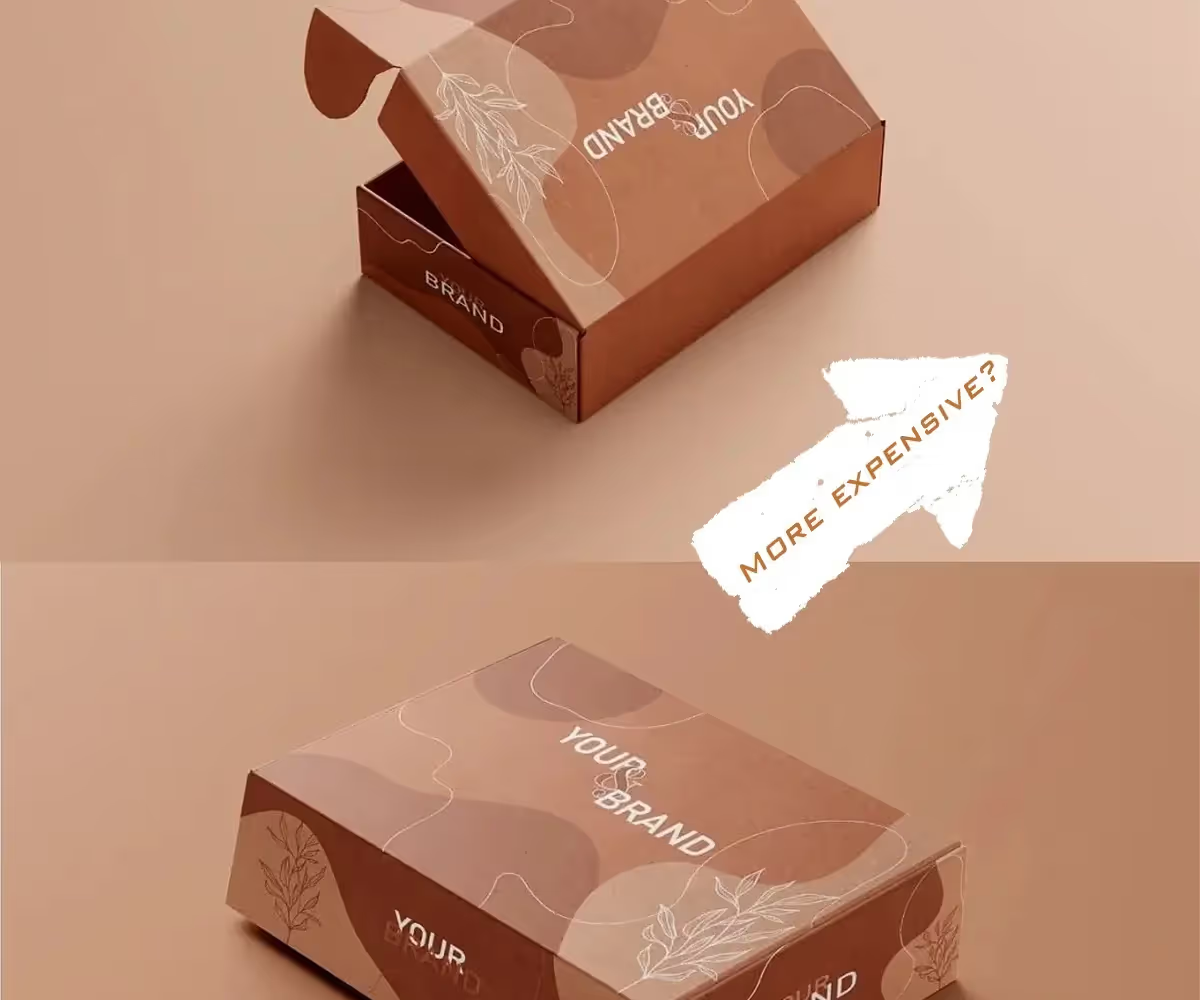10 Mistakes to Avoid When Creating Custom Rigid Boxes
Discover the top 10 mistakes to avoid when creating custom rigid boxes. Enhance your packaging strategy and ensure your products stand out effectively.
Start Customizing
Table of content
Custom rigid boxes are strong, premium packaging solutions that don’t fold or collapse, making them ideal for high-end products like cosmetics, electronics, and gifts. They’re more than just containers—they shape how customers perceive your brand. A well-designed rigid box can boost sales, enhance brand image, and create an unforgettable unboxing experience. But many brands fall into common traps when designing or ordering these boxes. In this article, we’ll walk through the 10 most common mistakes to avoid so you can create custom rigid boxes that impress and perform.
Table of Content
Mistake 1: Neglecting Target Audience Needs
Mistake 2: Poor Design and Aesthetics
Mistake 3: Inadequate Material Selection
Mistake 4: Overlooking Structural Integrity
Mistake 5: Ignoring Budget Constraints
Mistake 6: Underestimating Production Times
Mistake 7: Failing to Test Prototypes
Mistake 8: Lack of Flexibility and Adaptability
Mistake 9: Ignoring Sustainability
Mistake 10: Skipping Professional Consultation
1. Understanding the Customer Base
Every product has a specific audience. Your packaging should reflect who your customers are, what they value, and what kind of experience they expect. If you’re selling skincare to young adults, your packaging should be modern, vibrant, and Instagram-worthy. If you're targeting high-end buyers, it should feel elegant and sophisticated.
2. Importance of User Experience in Packaging
Good packaging makes the customer feel like the product was made just for them. It should be easy to open, enjoyable to interact with, and visually appealing. Ignoring these needs can lead to disappointment—even if your product is amazing.
3. Example of How Neglected Needs Can Impact Sales
A tech gadget company once packaged their sleek, modern device in a dull, outdated-looking rigid box. Customers said the packaging didn’t match the product. Reviews mentioned the poor unboxing experience—and sales dropped by 18% until they rebranded with sleeker, audience-focused packaging.
1. Importance of an Eye-Catching Design
Your box design is the first thing customers see. It needs to reflect your brand’s identity and create a sense of curiosity or excitement. A well-designed box can grab attention, tell a story, and even boost social media shares.
2. Common Design Pitfalls
· Using colors that clash or don’t match your brand
· Choosing hard-to-read fonts
· Overcrowding the design with too much text
· Ignoring alignment and spacing
· Forgetting about contrast and readability
3. Case Studies on Effective Designs
One chocolate brand increased online sales by 40% after switching to pastel-toned rigid boxes with minimalist gold-foil text. The packaging looked luxurious and feminine—perfect for their audience. Another example: a smartwatch startup used magnetic rigid boxes with sharp, modern typography and crisp graphics. Customers posted their unboxing on social media, which led to free advertising.

1. Types of Materials Available for Rigid Boxes
· Chipboard: Strong and commonly used
· Greyboard: Economical and good for inner structure
· Kraft Paperboard: Eco-friendly, gives a natural look
· Wrapped Paper: For printing textures or finishes
2. Consequences of Using Subpar Materials
Using low-quality board or wrapping paper can lead to boxes that crease easily, get damaged during shipping, or simply don’t “feel” premium. That reflects badly on your product—even before it's opened.
3. Recommendations for Quality Materials
For luxury products, go for thicker chipboard (1200–2000 gsm) with a high-quality textured or laminated wrap. If sustainability is important, opt for recycled kraft materials with soy-based ink. Always test samples before full production.
1. Importance of Sturdiness and Durability
Rigid boxes should protect the product and hold up during shipping and storage. Weak structures can ruin the unboxing experience—and even damage your product.
2. Common Structural Errors
· Poorly glued corners
· Insecure magnetic or ribbon closures
· Flimsy lids or bases
· Inserts that don’t hold the product firmly
3. Tips for Enhancing Box Construction
· Use die-cut foam or molded inserts to hold items in place
· Reinforce edges with double-walled construction
· Choose closures (magnetic, ribbon, snap) based on product weight
· Test boxes for stacking, pressure, and drops

1. Balancing Quality with Cost
It’s easy to want the best of everything—foil stamping, embossing, custom inserts, magnetic closures—but each add-on costs money. Overspending on packaging can eat into your profits.
2. Common Budget Pitfalls
· Ordering large quantities without testing first
· Overdesigning the box with unnecessary features
· Using custom sizes when standard ones would work
3. Strategies for Cost-Effective Packaging Solutions
· Focus on one “wow” element (like a foil logo or magnetic flap)
· Start with a smaller production run
· Use standard sizes to avoid tooling costs
· Work with a manufacturer who offers tiered pricing and design support
1. Importance of Lead Time in Custom Box Production
Custom rigid boxes take time. From material sourcing to printing and assembly, the process can take 4 to 8 weeks—or longer during peak seasons.
2. Consequences of Rushed or Delayed Projects
Last-minute orders often lead to higher costs (like express shipping) or missed deadlines for product launches, gifting seasons, or trade shows.
3. Suggestions for Efficient Planning and Timelines
· Plan at least 2–3 months ahead of your launch
· Approve all design files and prototypes early
· Communicate your timeline clearly with the supplier
· Add buffer time for revisions or shipping delays
1. Critical Role of Prototype Testing
A physical prototype helps you see the box in real life—how it feels, how your product fits, and how the design translates from screen to print.
2. Different Tests and Evaluations to Conduct
· Fit test: Does your product fit securely?
· Drop test: Does it protect the product if dropped?
· Visual test: Are the colors, fonts, and finishes correct?
· User test: Is it easy to open and reseal?
3. Real-Life Examples of Successful Testing Outcomes
A skincare brand avoided disaster when they found their cream jars were too tight in the insert. They adjusted the dimensions before the full run, saving thousands. Another company caught a typo on the inside lid—thanks to a physical sample.

1. The Evolving Nature of Consumer Preferences
Trends change. What looks trendy today might feel outdated next year. Brands that evolve with their audience stay relevant and respected.
2. Importance of Staying Current with Trends
Whether it’s minimalism, bold typography, or sustainability, following packaging trends shows your brand is modern and aware.
3. Suggestions for Incorporating Feedback into Designs
· Collect feedback through reviews or post-purchase surveys
· A/B test different packaging styles
· Offer seasonal or limited-edition box designs
· Work with designers to refresh visuals annually
1. Rise of Eco-Conscious Consumers
Today’s customers care about sustainability. Many are even willing to pay more for eco-friendly packaging. Ignoring this trend can alienate a big part of your market.
2. Common Mistakes Related to Non-Sustainable Materials
· Using plastic laminates that make boxes non-recyclable
· Oversized boxes that waste materials
· Not communicating sustainability efforts
3. Recommendations for Sustainable Rigid Box Options
· Use recycled or FSC-certified board
· Print with soy or water-based inks
· Avoid plastic windows or metallic foil when unnecessary
· Add messaging to let customers know your box is recyclable or reusable
1. Benefits of Seeking Expert Advice
Packaging involves material science, design, user psychology, and logistics. Professionals know how to balance all of these elements. They can also help you avoid costly mistakes.
2. Common Misconceptions About DIY Packaging
· “I can figure it out myself online”
· “It’s just a box—how hard can it be?”
· “Design software is all I need”
Truth: A small mistake in dimensions or material choice can ruin the whole experience—or waste your budget.
3. How to Find the Right Packaging Consultant
· Look for packaging companies with case studies and positive reviews
· Ask about minimum order quantities, material options, and design help
· Request samples or mockups before production
Tip: Partnering with the right supplier can help you scale smoothly as your brand grows.
Conclusion
Creating custom rigid boxes isn’t just about looks—it’s about delivering a consistent, high-quality experience that reflects your brand and meets your customers’ needs. By avoiding the 10 common mistakes outlined in this guide, you’ll save time, reduce costs, and build stronger connections with your audience. Great packaging doesn’t just protect your product—it helps sell it. Invest wisely, plan ahead, and let your packaging speak volumes about the value inside.
Recommended for you



.webp)





